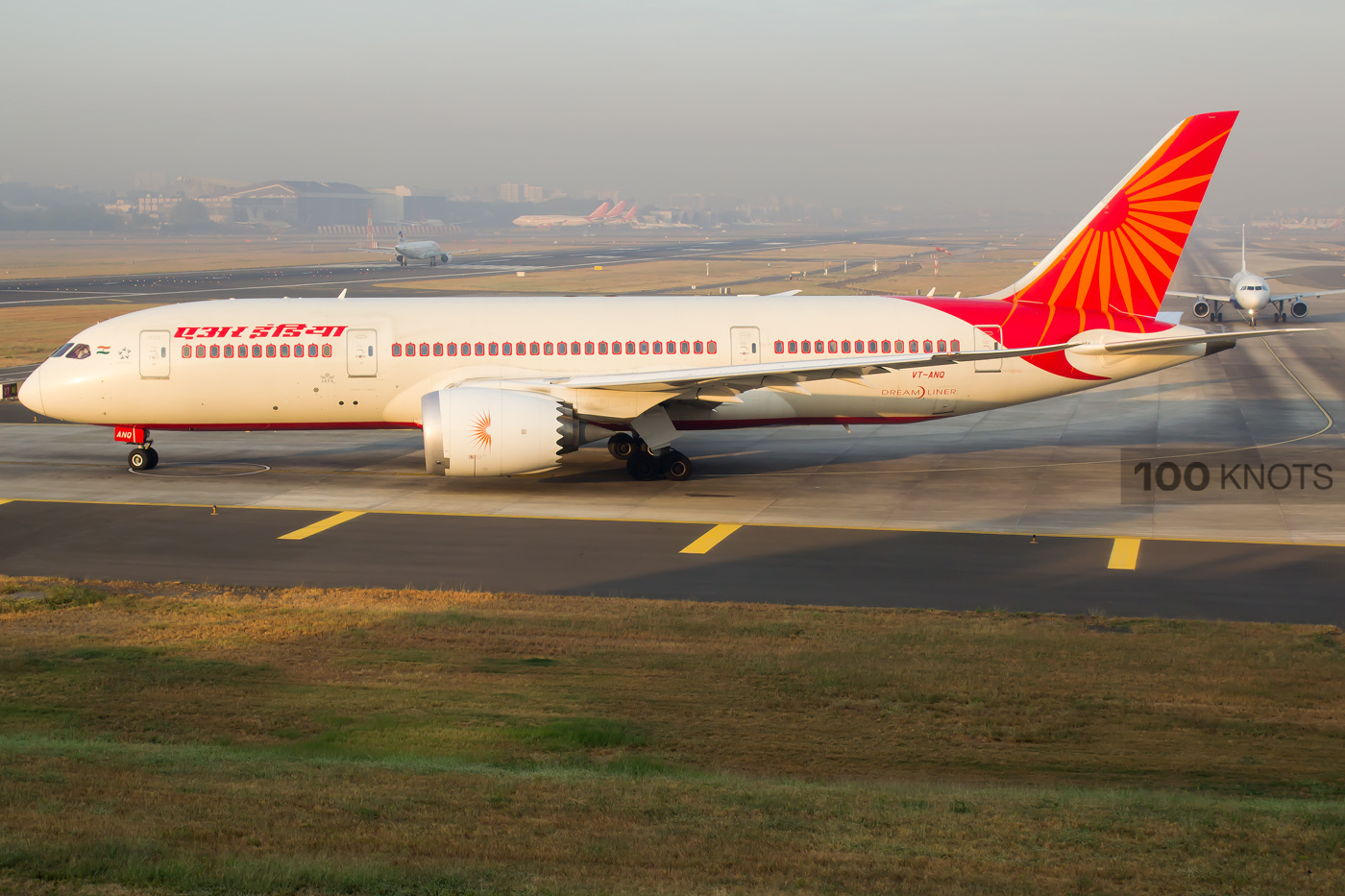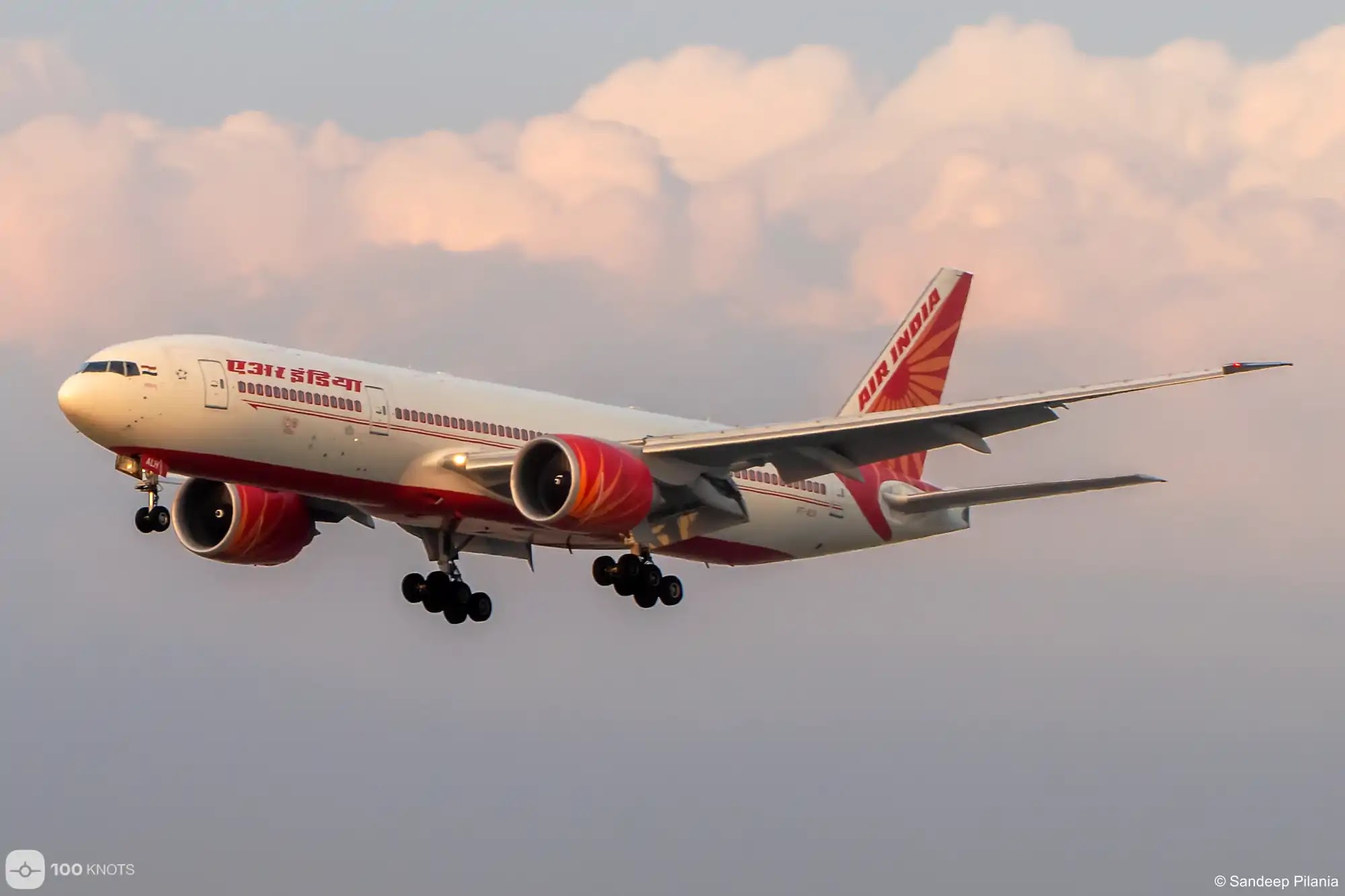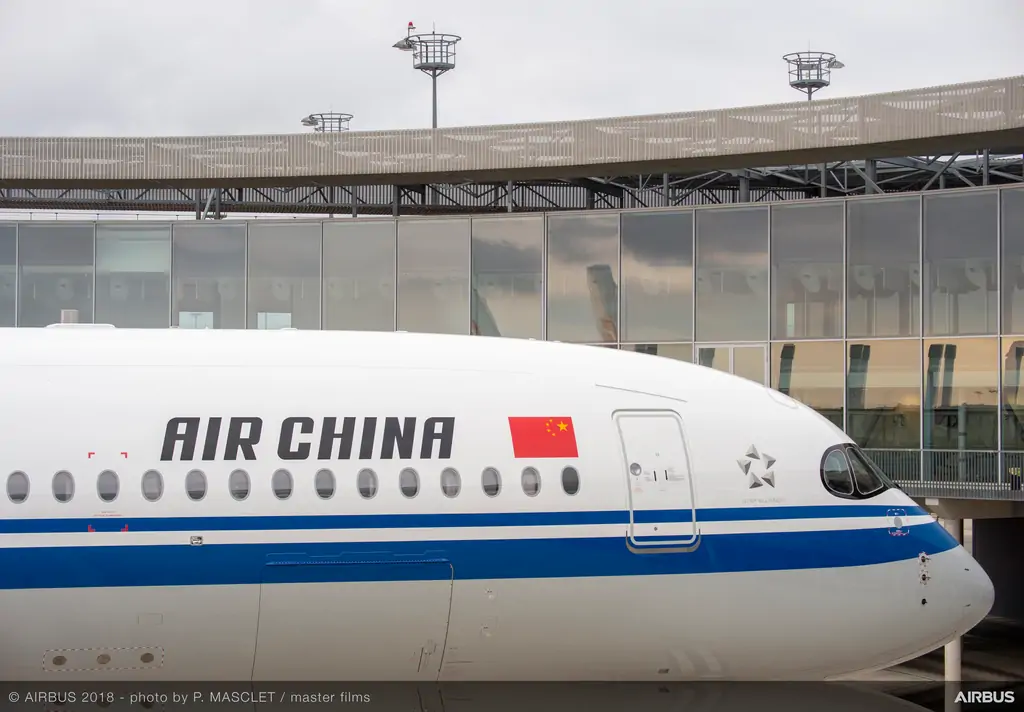In a significant move aimed at unlocking Ayodhya's economic potential and enhancing its global standing as a pilgrimage site, the Union Cabinet, led by Prime Minister Narendra Modi, has given the green light to declare Ayodhya Airport as an International Airport.
This transformation is a pivotal step toward fostering economic growth and inviting foreign pilgrims and tourists to the sacred city. The government has also unveiled the airport's new name, "Maharishi Valmiki International Airport, Ayodhyadham," paying homage to the revered sage attributed to composing the epic Ramayana.
Economic Implications
The decision to elevate Ayodhya Airport to international status is grounded in the recognition of its economic significance. The move is expected to attract foreign investment, stimulate tourism, and generate employment opportunities in the region. As Ayodhya emerges on the global aviation map, the economic ripple effects are poised to benefit not only the city but the entire surrounding area.
Cultural Touch
The naming of the airport after Maharishi Valmiki adds a cultural dimension to its identity, connecting it to the rich heritage of Ayodhya. Maharishi Valmiki holds a pivotal place in Hindu mythology as the sage credited with composing the Ramayana, an ancient epic that narrates the life and adventures of Lord Rama. The decision to honor this cultural icon through the airport's name reflects the government's commitment to preserving and promoting India's diverse cultural tapestry.
Infrastructure Development
The Airports Authority of India has invested approximately Rs 1500 crore in the first phase of Ayodhya Airport, creating a modern aviation hub. The terminal building, spanning 6,500 sqm, is equipped to handle up to 10 lakh passengers annually. The architectural design of the terminal mirrors the upcoming Shri Ram Mandir of Ayodhya, giving it a distinctive and culturally resonant appearance. The interiors boast local art, paintings, and murals that vividly depict the life of Lord Rama, offering passengers a unique and immersive experience.
Flight Operations
With the infrastructure in place, major airlines such as IndiGo and Air India Express have already announced plans to commence flights to Ayodhya from key cities like Delhi, Mumbai, Ahmedabad, Bengaluru, and Kolkata. This marks a crucial step in improving connectivity to Ayodhya and facilitates easier access for domestic and international travelers.
Extended Runway Capacity
The airport's extended runway, designed to accommodate Airbus A-321 and Boeing B-737 type aircraft, further enhances its operational capabilities. This upgrade is poised to attract a broader range of airlines and contribute to the seamless connectivity of Ayodhya with various parts of the world.
Conclusion
The elevation of Ayodhya Airport to international status is a momentous development that holds promise for the economic and cultural prosperity of the region. As the "Maharishi Valmiki International Airport, Ayodhyadham" opens its doors to the world, it signifies not only a boost to tourism and commerce but also a celebration of India's rich cultural heritage. The government's strategic vision in transforming Ayodhya into a global aviation hub underscores its commitment to holistic development and positioning India on the world stage.
Read next
In response to the growing demand for better air connectivity, Air India is set to launch a direct daily service between Mumbai and Bhuj starting from 1st March. This move comes as a significant development, further enhancing the accessibility and convenience for travelers in the region.
Bridging Gaps in Air Connectivity
Air India's decision to introduce a direct daily service between Mumbai and Bhuj aims to address a longstanding demand from local residents for a more accessible and convenient air travel option. This new service is poised to provide a seamless connection between these two cities, offering passengers a comfortable travel experience.
Flight Details: A320 Aircraft Operation
The newly introduced service, operated by an A320 aircraft, will bear the flight number AI 601. Departing from Mumbai at 0705 hrs, the flight is scheduled to arrive in Bhuj at 0820 hrs. The return flight, AI 602, will take off from Bhuj at 0855 hrs, landing in Mumbai at 1010 hrs. The introduction of this daily service is expected to significantly reduce travel time and enhance the overall travel experience for commuters on this route.
International and Domestic Connectivity
In addition to fulfilling the local demand, Air India's new service is strategically positioned to offer convenient international connections. Passengers flying from Mumbai to Bhuj will now have smoother access to destinations in the UK, the North Americas, Dubai, and Singapore. Furthermore, the flight will serve as a gateway to approximately 20 domestic cities, enhancing connectivity within the country.
Ticket Pricing: Competitive Options
Air India has positioned itself competitively in terms of pricing for this new route. Economy tickets for the Mumbai-Bhuj flight are being offered at around Rs 5000, making air travel more affordable for a broader spectrum of travelers. In comparison, Alliance Air, which already serves this route, has economy fares around Rs 8000. The competitive pricing by Air India is expected to make air travel a more attractive option for the discerning traveler.
Alliance Air's Role in Regional Connectivity
While Air India is set to make its mark with the A320 aircraft operation, Alliance Air continues to play a crucial role in regional connectivity using ATR turboprop planes. The presence of both airlines on this route not only enhances options for travelers but also contributes to the overall development of air travel infrastructure in the region.
Conclusion
Air India's decision to launch a direct daily service between Mumbai and Bhuj is a positive development for both local residents and travelers looking for efficient and affordable air travel options. With enhanced international and domestic connectivity, competitive pricing, and the synergy between Air India and Alliance Air, this move is expected to contribute significantly to the growth and accessibility of air travel in the region. As of March 1st, passengers can look forward to a more convenient and comfortable journey between these two important cities.
Read next
The Directorate General of Civil Aviation (DGCA) has recently taken action against two major Indian airlines, Air India and SpiceJet, for their role in a series of flight diversions during adverse weather conditions in Delhi. The regulatory body issued show-cause notices, highlighting concerns about non-CAT III compliant pilots being rostered, leading to disruptions in flight schedules.
Background & Show Cause Notices
Between December 24-28, over four dozen flights experienced diversions due to poor visibility conditions, creating chaos and inconvenience for passengers. The primary cause identified was the operation of flights by pilots not adequately trained for CAT III conditions – a critical aspect for landing in very low visibility scenarios.
On January 2, the DGCA officially served show-cause notices to both Air India and SpiceJet, demanding a response within two weeks. The notices raise questions about the airlines' adherence to safety protocols and the deployment of pilots lacking CAT III training, which is essential for conducting landings in foggy conditions.
Unprecedented Fog Situation
Government officials acknowledged that this year's fog density in Delhi has been slightly unprecedented, although the phenomenon itself is transitory and occurs annually for about 15-20 days. Civil Aviation Minister Jyotiraditya Scindia emphasized the need for coordination between airlines and airports to ensure the availability of CAT II and CAT III-trained pilots during foggy hours.
Minister's Statements & Measures in Place
Minister Scindia addressed the situation, highlighting the government's efforts to manage congestion and enhance safety measures. He mentioned ongoing initiatives, including monitoring congestion at landing airports and restricting take-offs without direct routing to prevent further disruptions during foggy conditions.
Assurances were given that measures are being implemented to address the challenges posed by the dense fog. The focus is on ensuring the deployment of adequately trained pilots and improving coordination between airports and airlines. The goal is to mitigate disruptions and enhance overall safety standards during adverse weather conditions.
Conclusion
The show cause notices from DGCA to Air India and SpiceJet underscore the significance of adhering to safety protocols, especially during challenging weather conditions. The aviation industry is urged to prioritize the training of pilots for CAT III conditions to avoid disruptions and ensure the smooth operation of flights, particularly during the annual fog season in Delhi. As responses from the airlines are awaited, the incident serves as a reminder of the critical role regulatory bodies play in upholding safety standards within the aviation sector.
Read next
American Airlines Pilots Union Considers Integration of Senior Regional Pilots
Abhishek Nayar
05 Jan 2024

In a recent development, the Allied Pilots Association (APA), representing American Airlines' pilots, has initiated discussions on integrating aviators from regional carriers, such as Envoy Air, into its mainline pilots' seniority list. Additionally, the union is exploring the potential adjustment of the retirement age from 65 to 67. This move aims to assess the implications and minimize any adverse effects on the pilots, as highlighted by union President CA Ed Sicher.
Committee Formation and Objectives
The APA has formed a dedicated committee to delve into the feasibility and implications of incorporating pilots from regional carriers into the mainline pilots' seniority list. This committee will critically examine various aspects, including seniority considerations, career progression, and potential impacts on existing pilots. The overarching goal is to ensure a fair and smooth integration process.
Retirement Age Considerations
Part of the committee's mandate is to investigate the potential adjustment of the retirement age for pilots from 65 to 67. President CA Ed Sicher emphasized the importance of minimizing any adverse impact on pilots as a result of this change. This move aligns with ongoing debates in the aviation industry and legislative circles regarding the appropriate retirement age for commercial pilots.
Controversy Surrounding Retirement Age Legislation & Industry Perspectives
The proposal to raise the retirement age for commercial pilots has faced opposition from various unions, including the Air Line Pilots Association (ALPA). Critics argue that such a change could introduce new risks into the aviation system, emphasizing the lack of comprehensive studies by safety agencies on the potential implications. Despite opposition, the Regional Airline Association (RAA) estimates that the proposed bill could provide an option for 5,000 pilots to continue working over the next two years.
The airline industry is closely watching these developments, as any changes in the retirement age and integration of regional pilots into mainline operations could have widespread implications. Proponents of the bill argue that it offers a solution to the industry-wide pilot shortage, providing additional qualified personnel. However, concerns linger about the potential impact on safety and existing pilots' career trajectories.
Conclusion
The Allied Pilots Association's formation of a committee to explore the integration of regional pilots and the potential adjustment of the retirement age reflects the dynamic landscape of the aviation industry. As discussions unfold, stakeholders, including pilots, unions, and regulatory bodies, will closely monitor the outcomes, considering the broader implications for safety, workforce dynamics, and the future of commercial aviation. The ongoing debate surrounding the retirement age legislation further underscores the need for a balanced approach that addresses both workforce challenges and safety concerns in the aviation sector.
With Inputs from Reuters
Read next
China's aviation regulator, the Civil Aviation Administration of China (CAAC), has announced ambitious expectations for the recovery of international flights in 2024. Despite the challenges posed by the COVID-19 pandemic, the CAAC foresees a significant increase in the number of international flights to and from the country, aiming to reach 6,000 flights per week by the end of the year – approximately 80% of pre-COVID levels.
Current Status of International Flights & Focus on China-U.S. Connectivity
As of now, there are approximately 4,600 international flights per week, a notable improvement from the meager 500 weekly flights at the beginning of 2023. The CAAC's optimism reflects a positive trend in the aviation industry, signaling a gradual recovery from the disruptions caused by the pandemic.
The CAAC emphasized its commitment to promoting a "significant" increase in direct flights between China and the United States. Currently, there are 63 weekly flights between the two countries, and the regulator aims to enhance this connectivity, facilitating smoother travel between two of the world's largest economies.
Challenges in International Travel Recovery
While China's domestic travel industry has rebounded strongly following the relaxation of its zero-COVID policy, international travel has faced several challenges. Factors such as a scarcity of flights, elevated ticket prices, and administrative obstacles in visa procurement have contributed to the lag in the recovery of international travel.
Expected Passenger Trips in 2024
The CAAC anticipates a total of 690 million passenger trips in 2024, encompassing both domestic and international travel. This projection represents an 11% increase from the previous year, signaling a robust recovery for the aviation sector. In 2023, 620 million trips were recorded, marking an impressive surge of 146.1%.
Factors Driving the Recovery
Several factors contribute to the optimistic outlook for international air travel in China. The global vaccination effort has played a pivotal role in mitigating the impact of the pandemic, instilling confidence in travelers. Additionally, the easing of travel restrictions and the gradual normalization of international travel protocols have contributed to the resurgence of the aviation industry.
Conclusion
China's aviation sector is poised for a dynamic rebound in 2024, with the CAAC's projections indicating a substantial recovery in international flights. The focus on enhancing connectivity with major international partners, especially the United States, reflects a strategic approach to bolstering economic and diplomatic ties. While challenges persist, the positive trajectory suggests that the aviation industry in China is on track for a robust and sustained recovery in the post-pandemic era.
With Inputs from Reuters





Comment